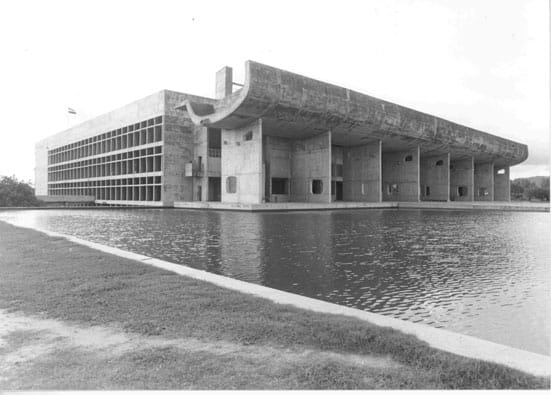19th February 2009 — 24th May 2009
The art of architecture is multidisciplinary. The Le Corbusier exhibition at the Barbican makes this clear, presenting an oeuvre that spanned art, poetry, publishing and architecture and one could usefully spend hours among the models, journals, videos, and furniture.
For those whose knowledge of Le Corbusier is limited to the written word and photograph, the archive of films that contextualise and respond to his practice makes this a worthwhile curatorial project. Not to be missed is Rene Clair's Entr'acte (1922), a Dada film, originally made for showing between theatre acts, and including a cast of Eric Satie (who also wrote the music), Francis Picabia, Marcel Duchamp and Man Ray. The inclusion of Entr'acte seems, nevertheless, somewhat ironic given Le Corbusier's insistence on the rational his faith in the machine. In the film Eric Satie and Picabia take turns to jump up and down balletically and fire a cannon, while in a second sequence the cast are shown running down streets, racing along on a go-cart, and finally happening upon a coffin in a field that contains a live-and-well Duchamp.
Towards the end of the exhibition another film, The Beginnings of Utopia (Sylvian Roumette, 1998) takes as its subject Chandigarh, India, an entire city commissioned by the government after independence, and realised by Le Corbusier between 1951 and 1964. The very concept of a master-planner would sound almost quaint if it were not for the fact that Chandigarh was actually built. The camera pans around flats and shopping areas to reveal the trademark pilotti, steel window frames, balconies, parks and government buildings and, predictably, they bear very little relationship to the cute, spot-lit architectural drawings and models dotted around the exhibition. But these are lived spaces, similar to many others in India, and indifferent to the authority of the architecture or to the multidisciplinary skills of its author. So what becomes apparent from this film, is not how important the architect is in shaping a space, but how little the architect actually matters. While Chandigarh may feel ideologically distasteful to a postmodern, pluralist sensibility - the scale of the metropolis has, after all, taken care of things. The people, their histories, and trajectories reveal themselves in spite of the imposed structure, rendering the buildings an instrument of other forces that are too complex to have been factored into design.
With hindsight, the inclusion of a Dada film earlier in the exhibition seems not so ironic. Indeed, one wonders how many of Chandigarh's inhabitants have heard of Le Corbusier at all. But perhaps that is a project for another video.
Nick Ferguson
Barbican Art Gallery
Barbican Centre
Silk Street
London EC2Y 8D
http://www.barbican.org.uk/artgallery/
Open
Daily, 11am-8pm
Late night first Thurs, 11am-10pm

Le Corbusier
Design for a tapestry in the Parliament Building,Chandigarh
1961
©FLC/DACS, 2009

Le Corbusier
Palais de l'Assemblée, Chandigarh
1955
©FLC/DACS, 2009